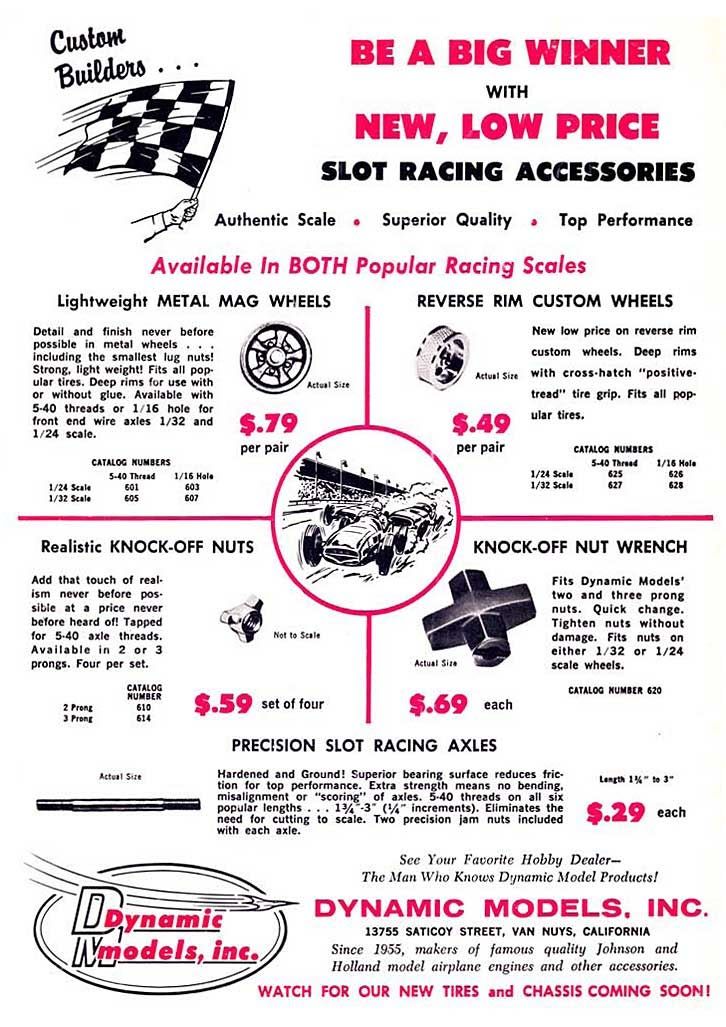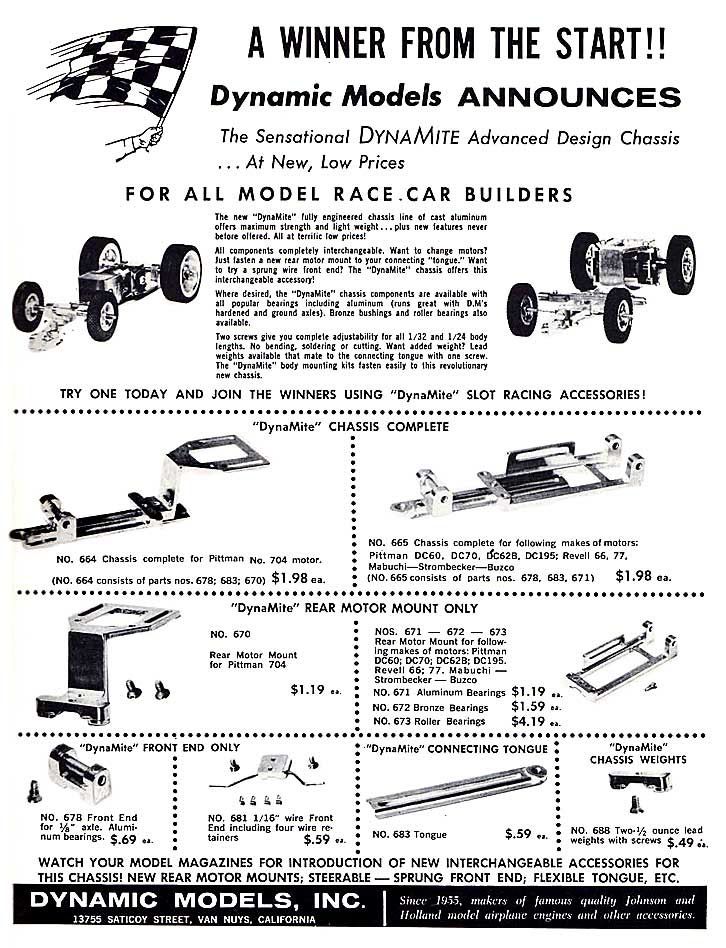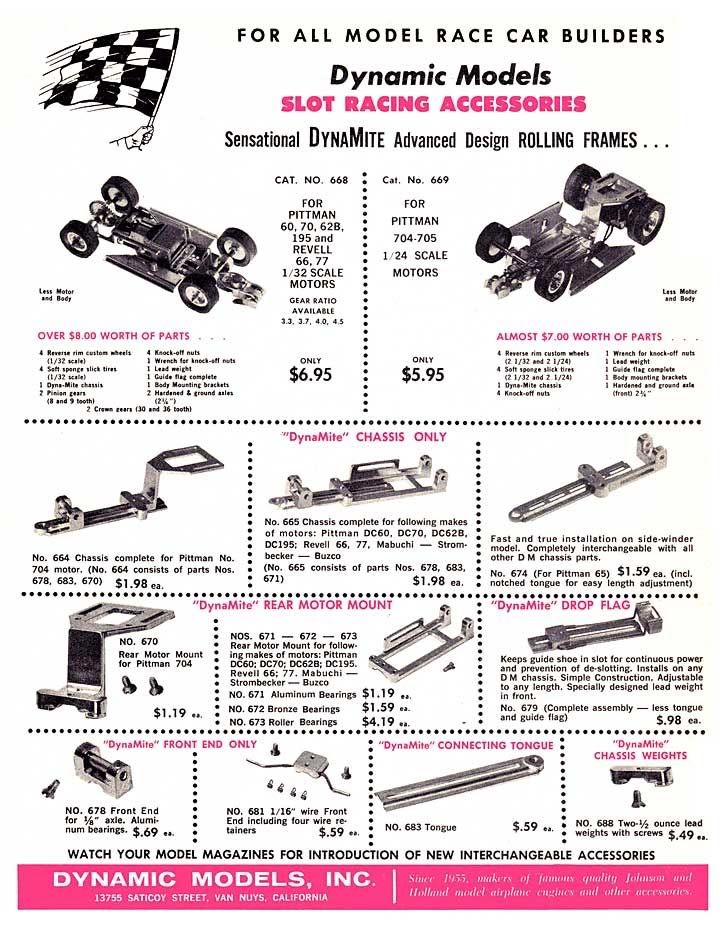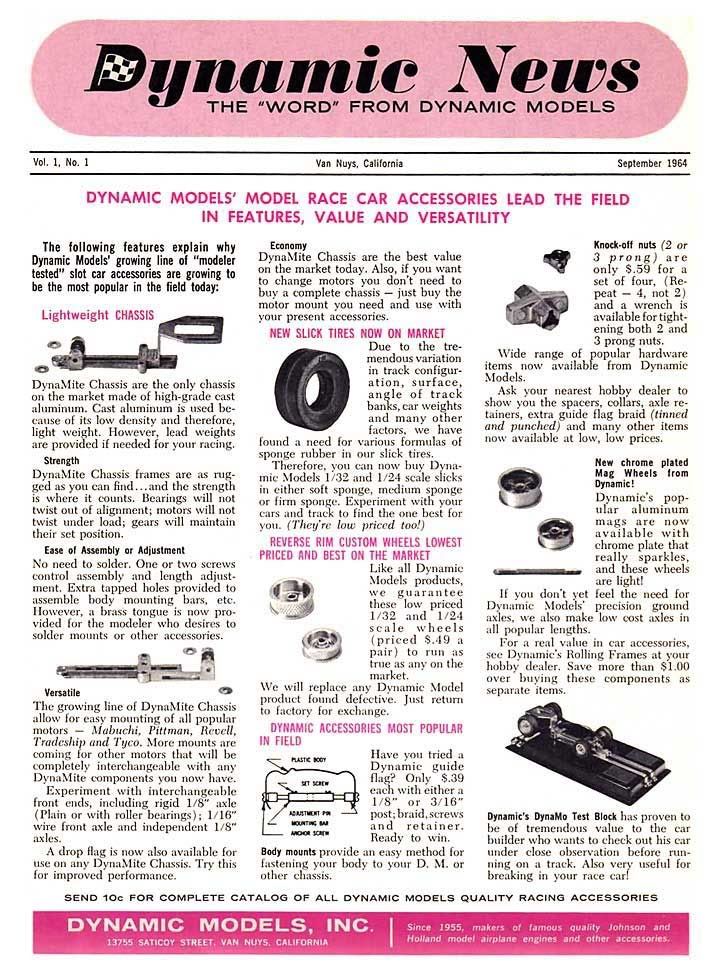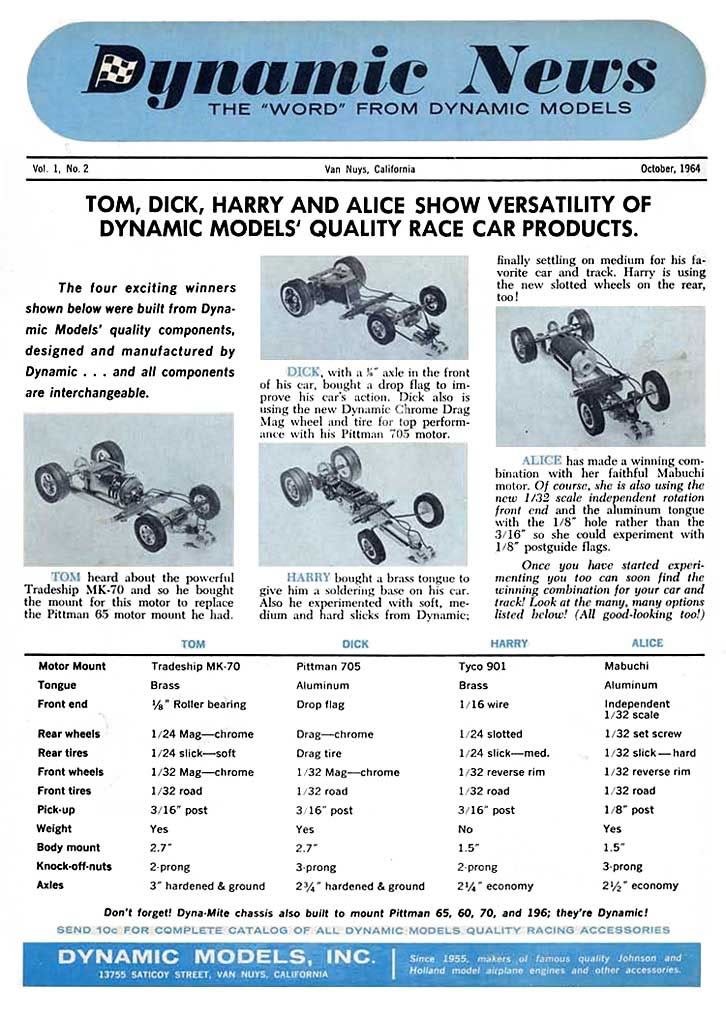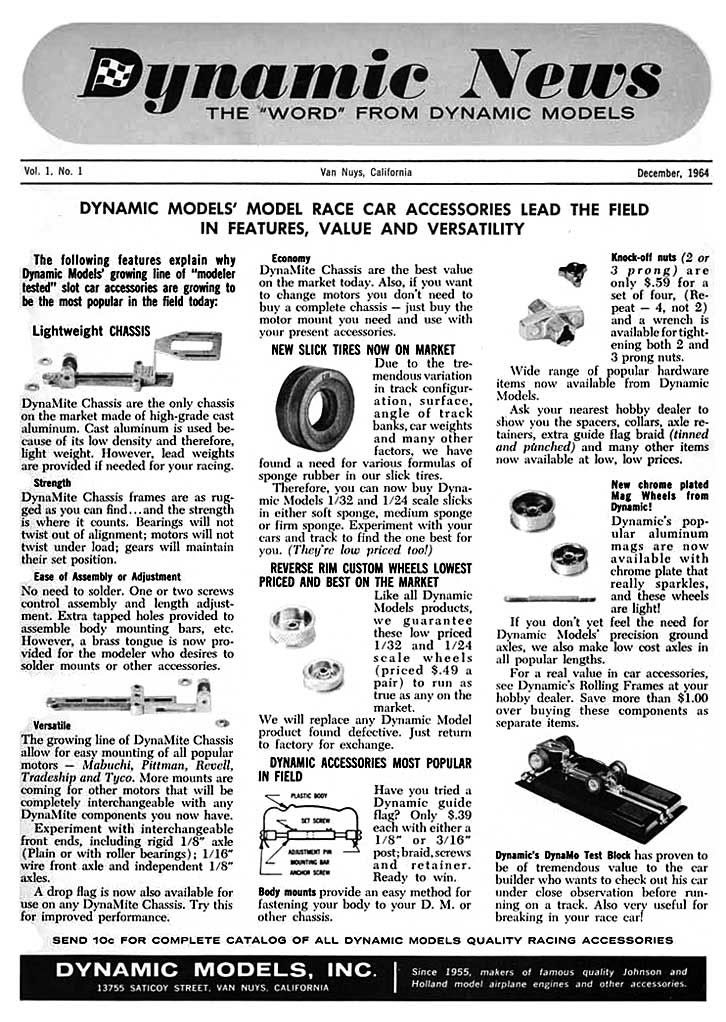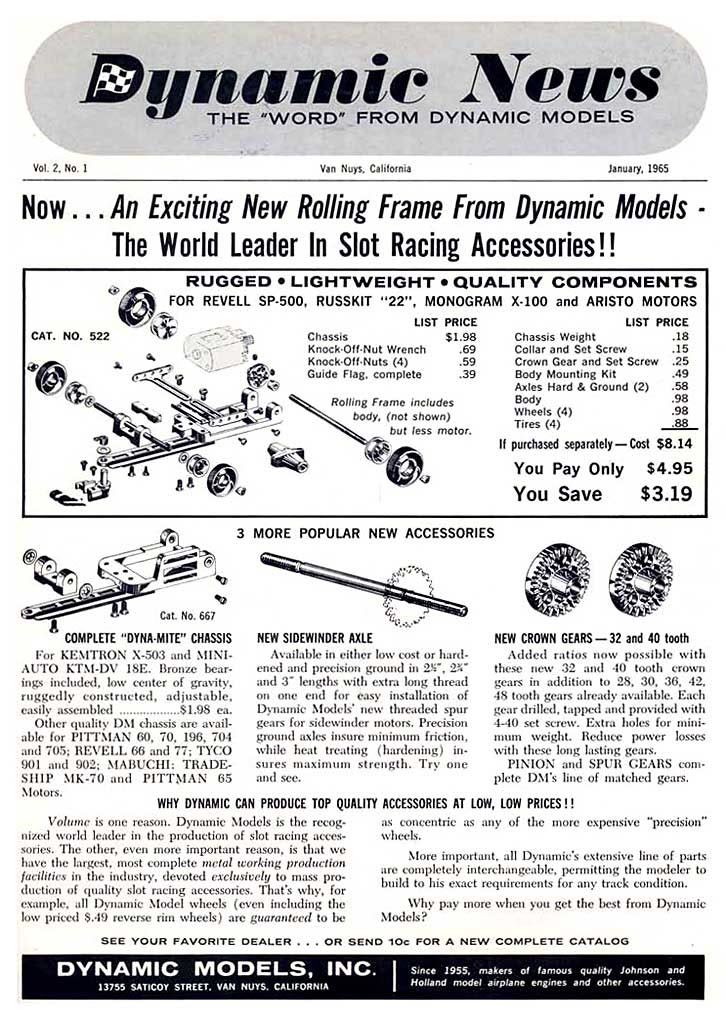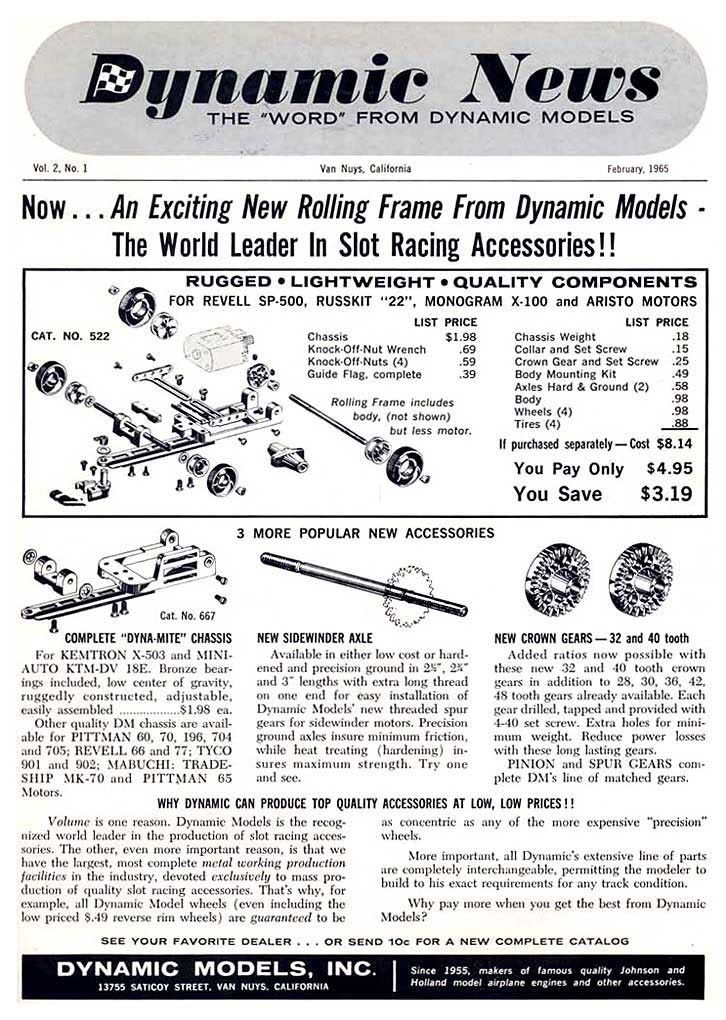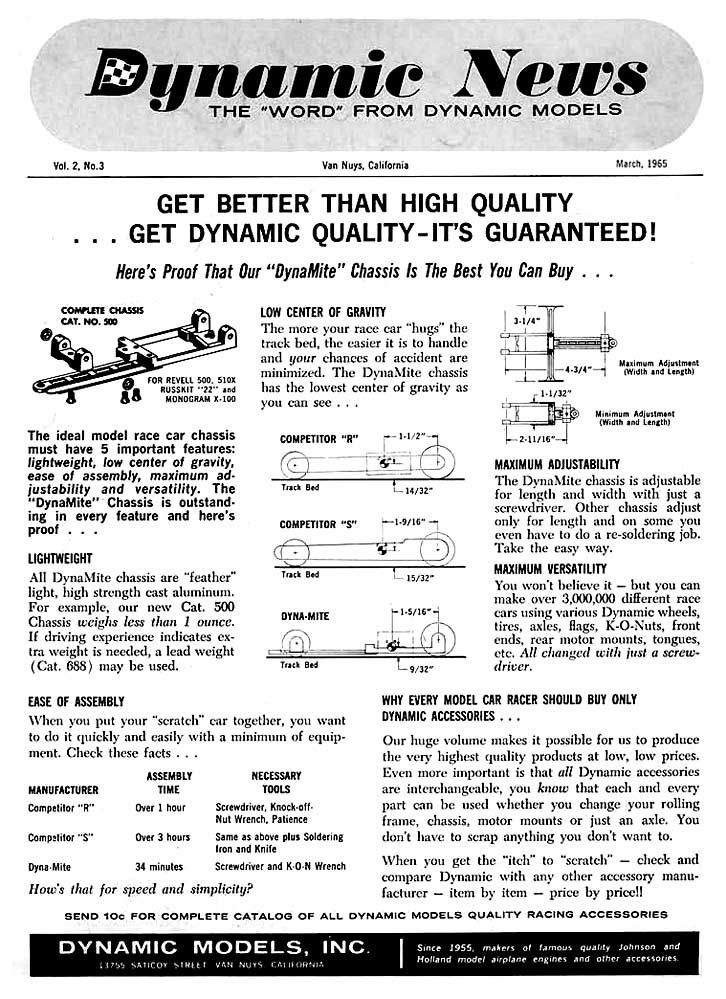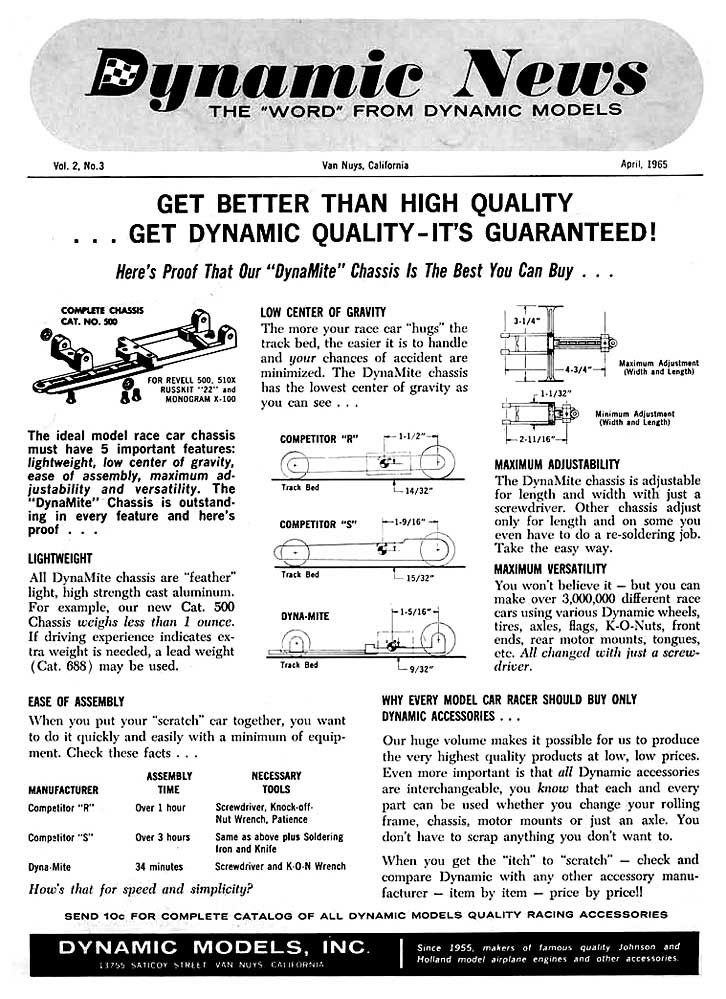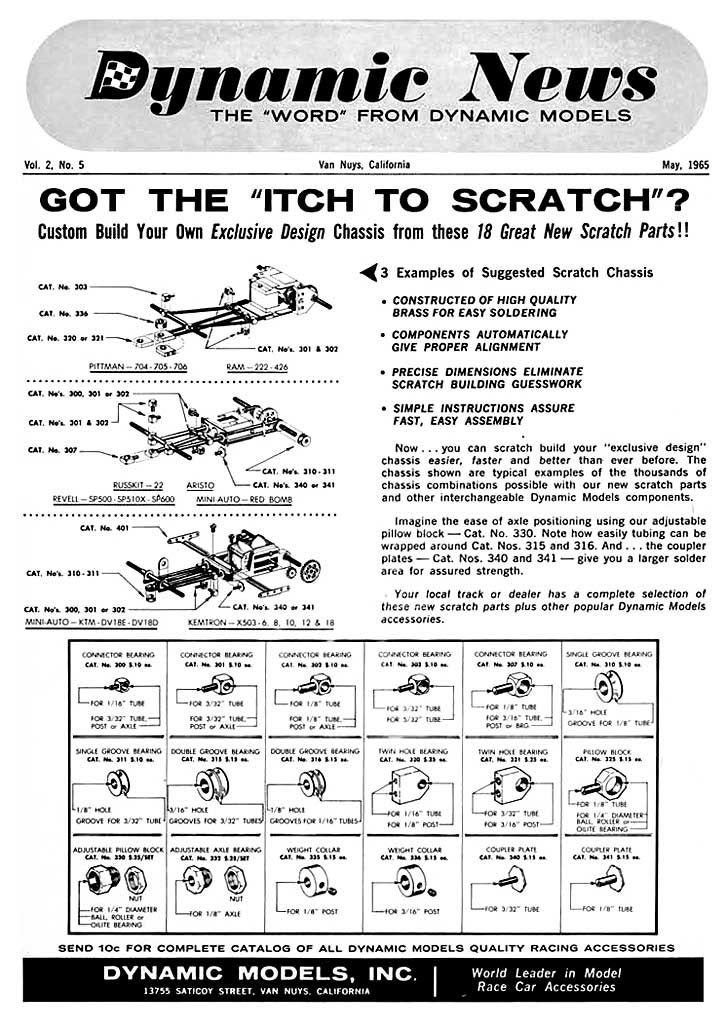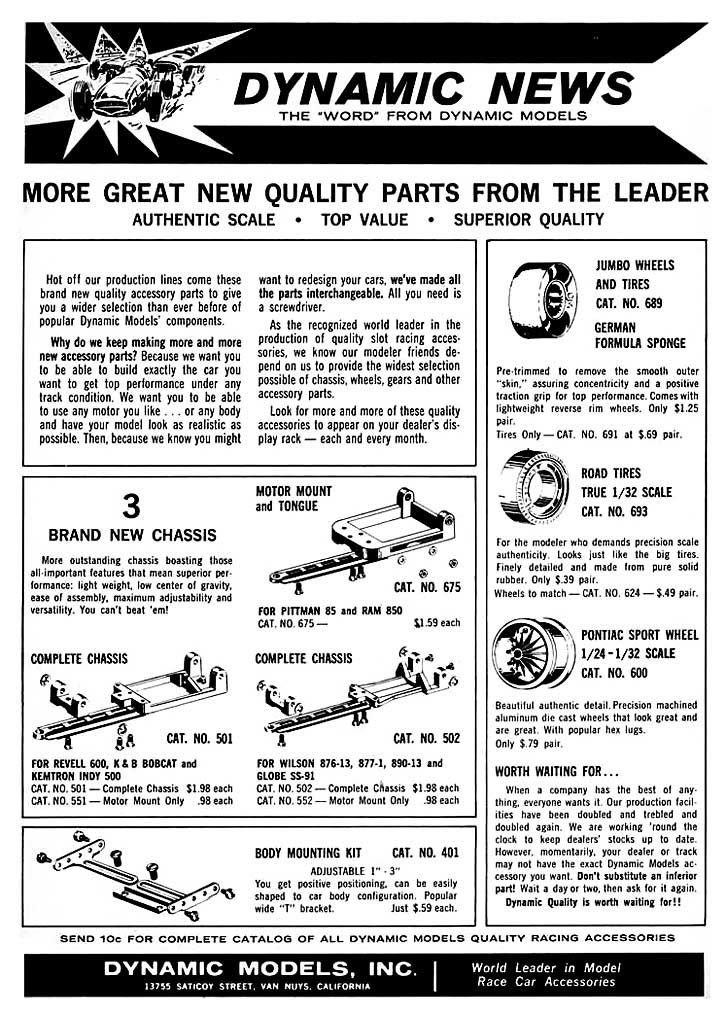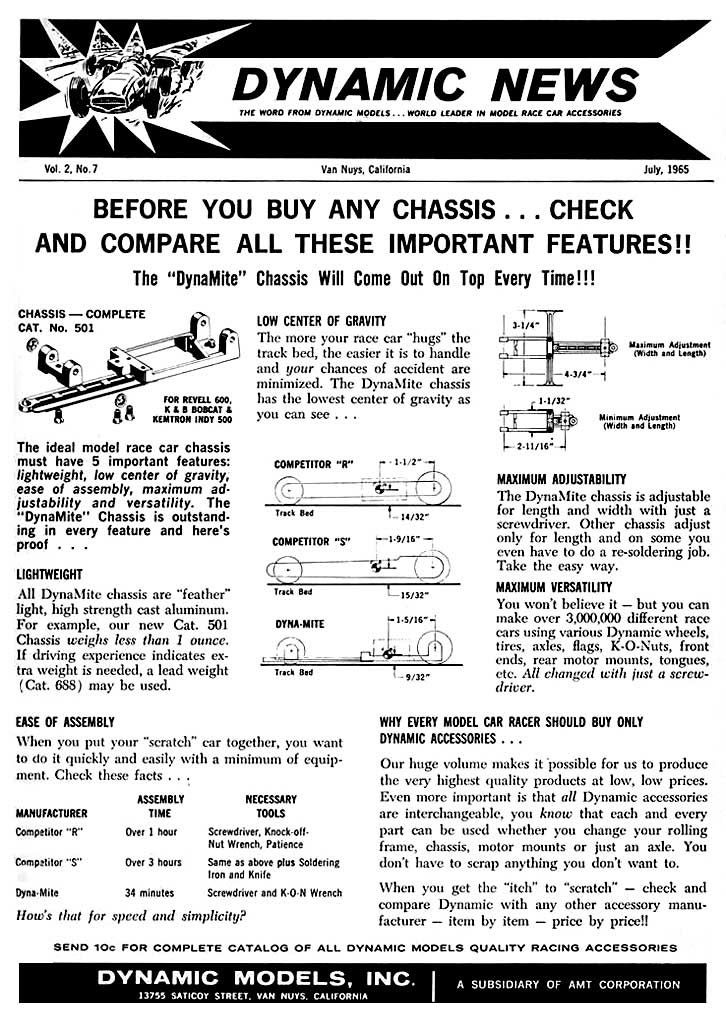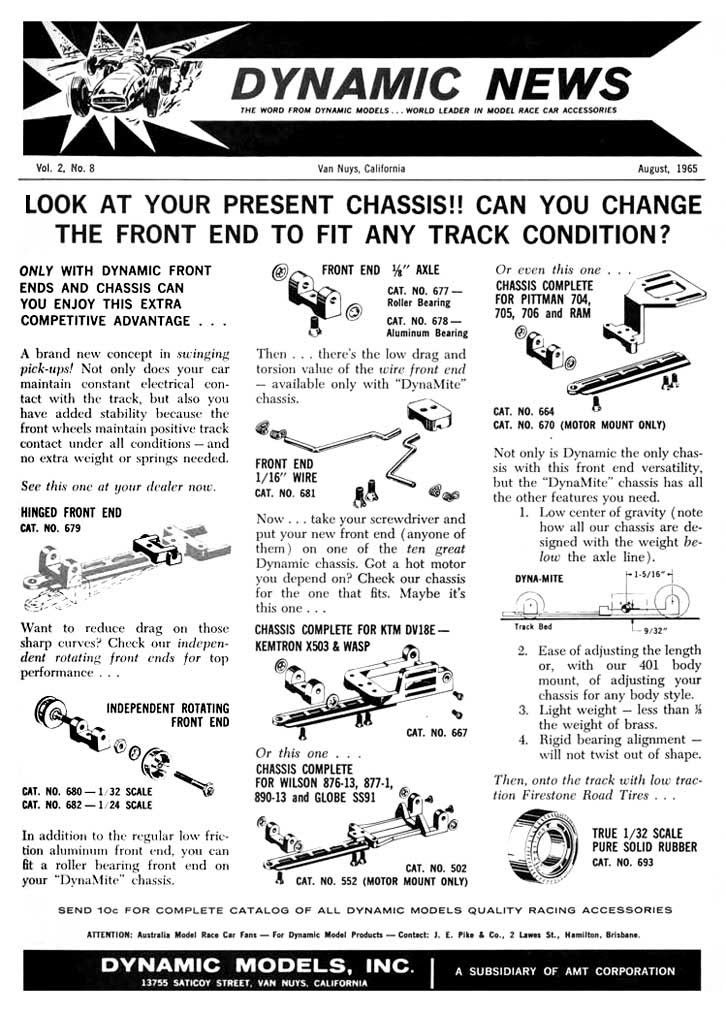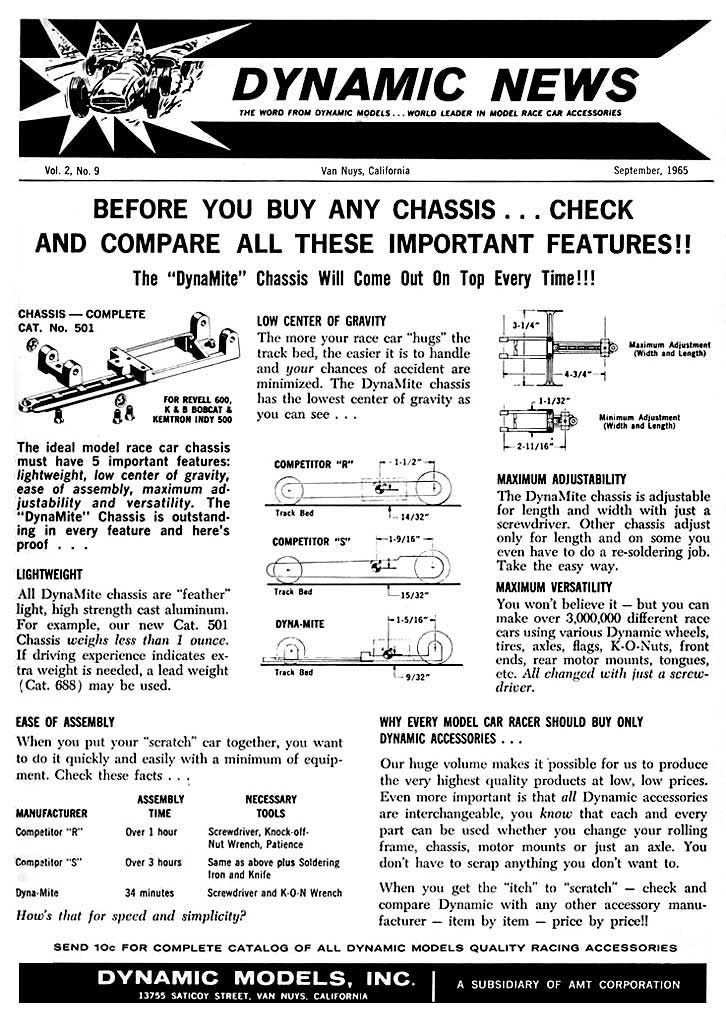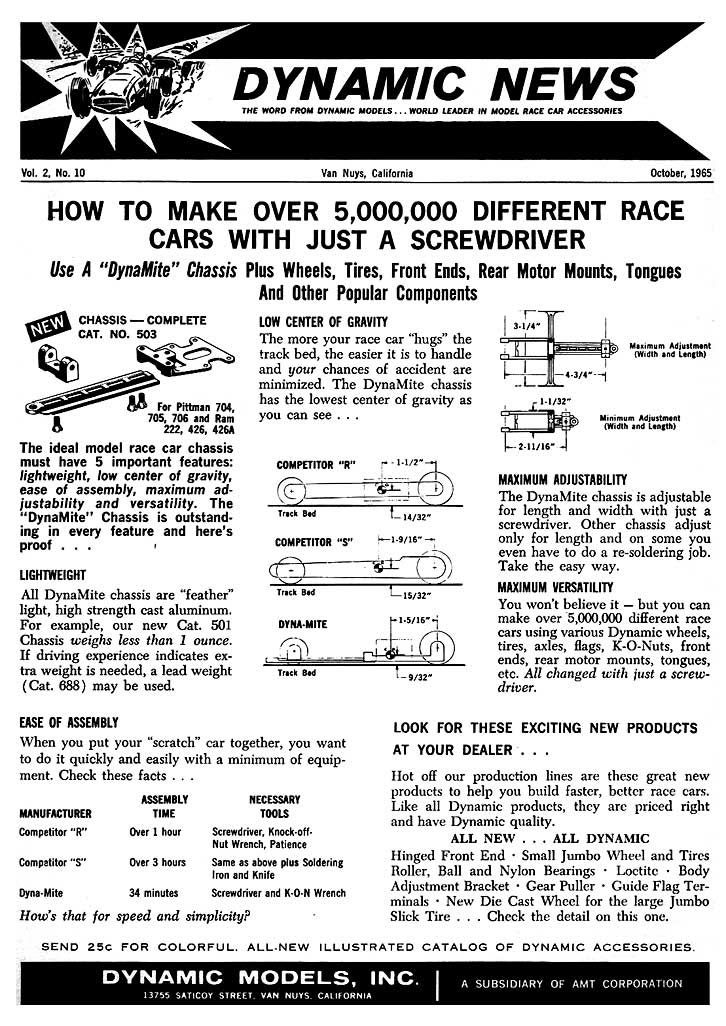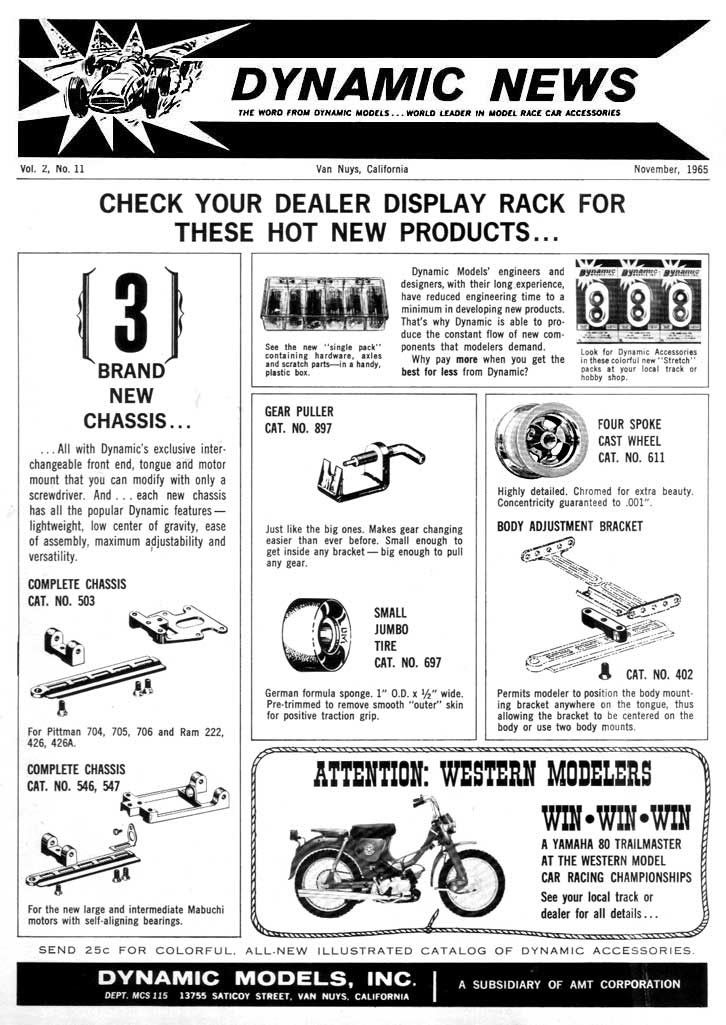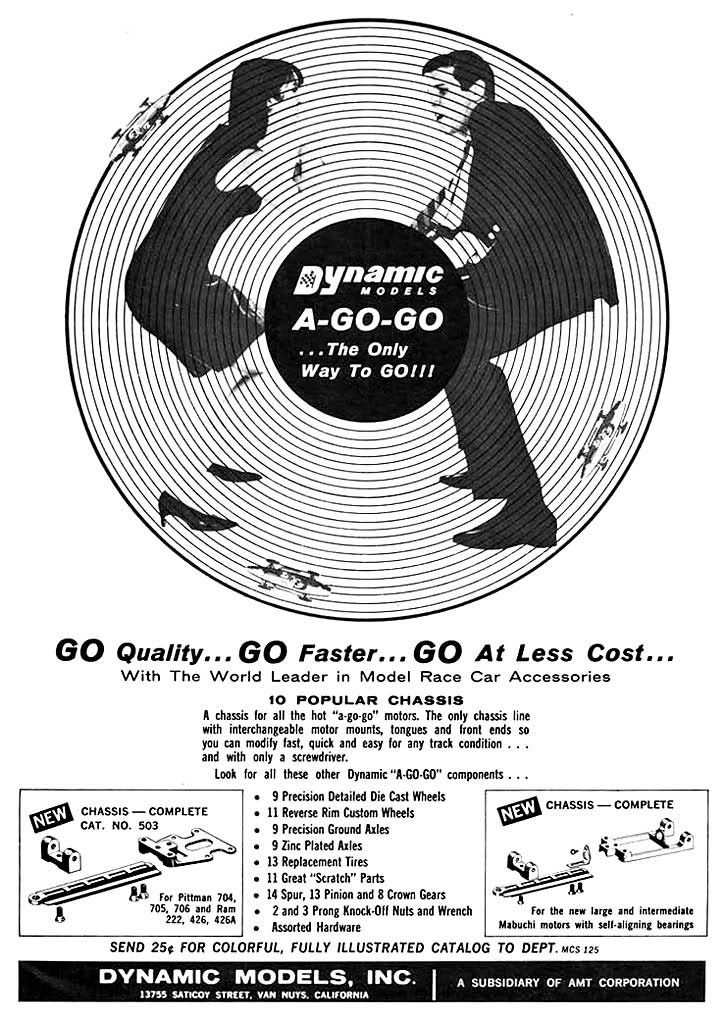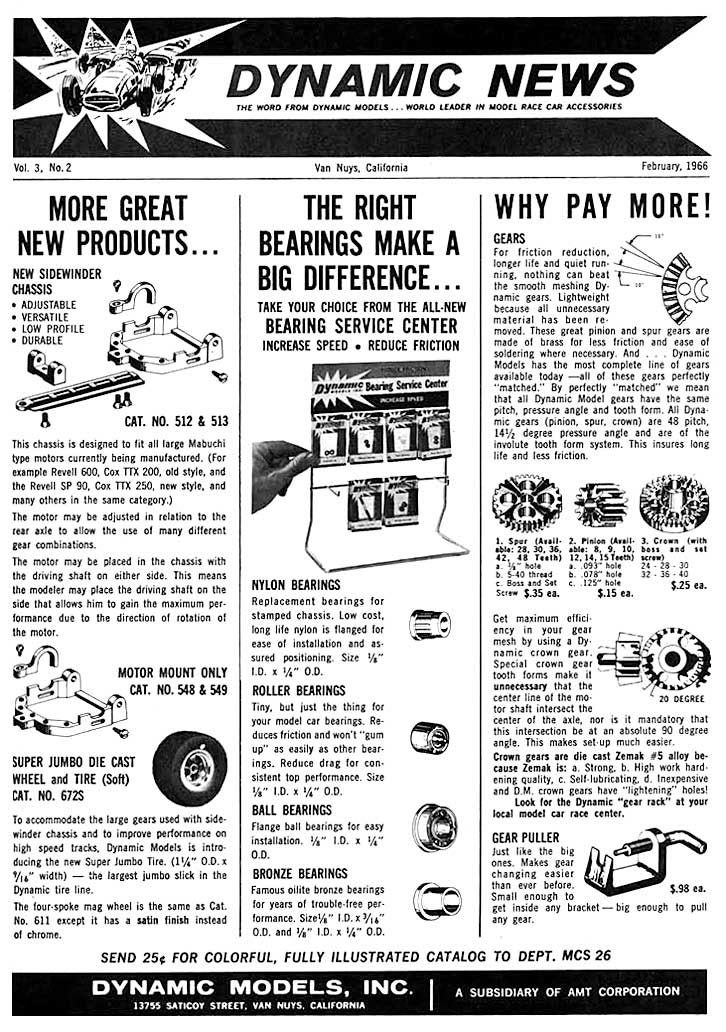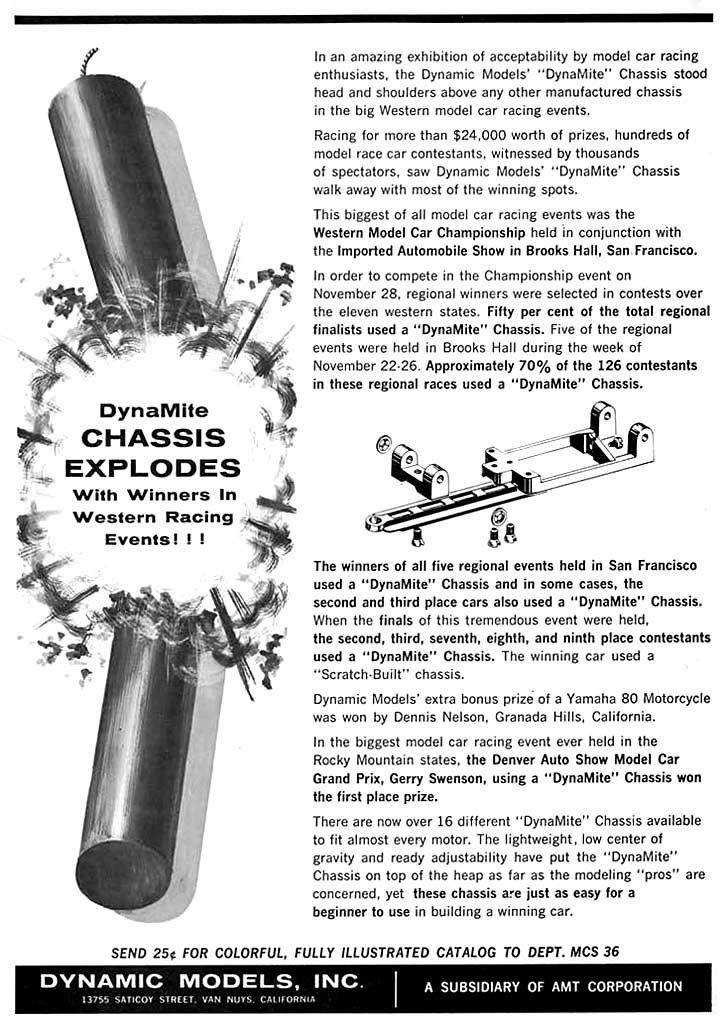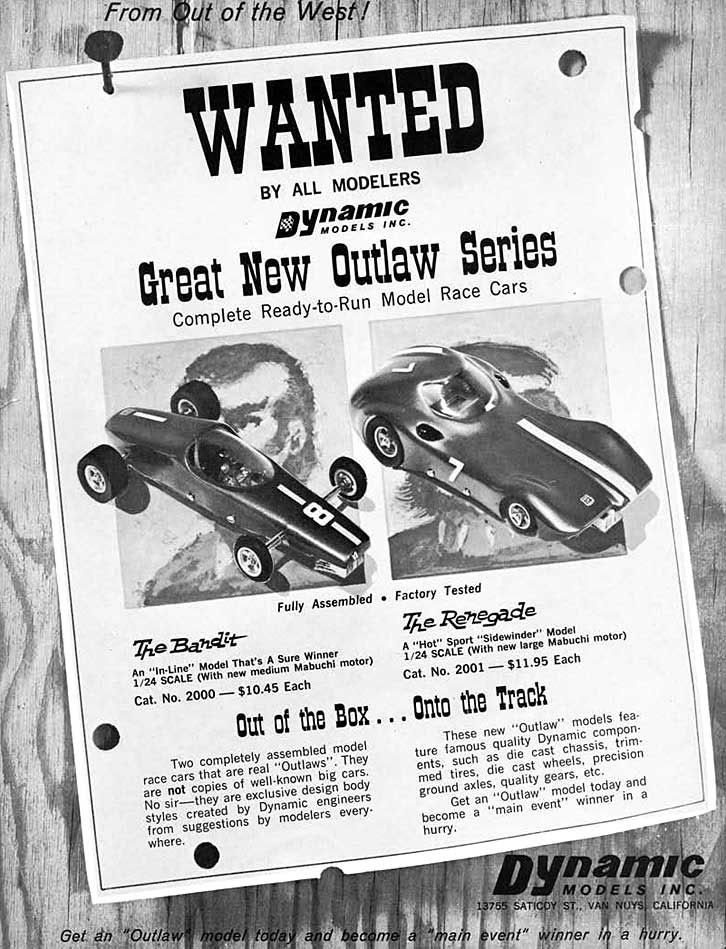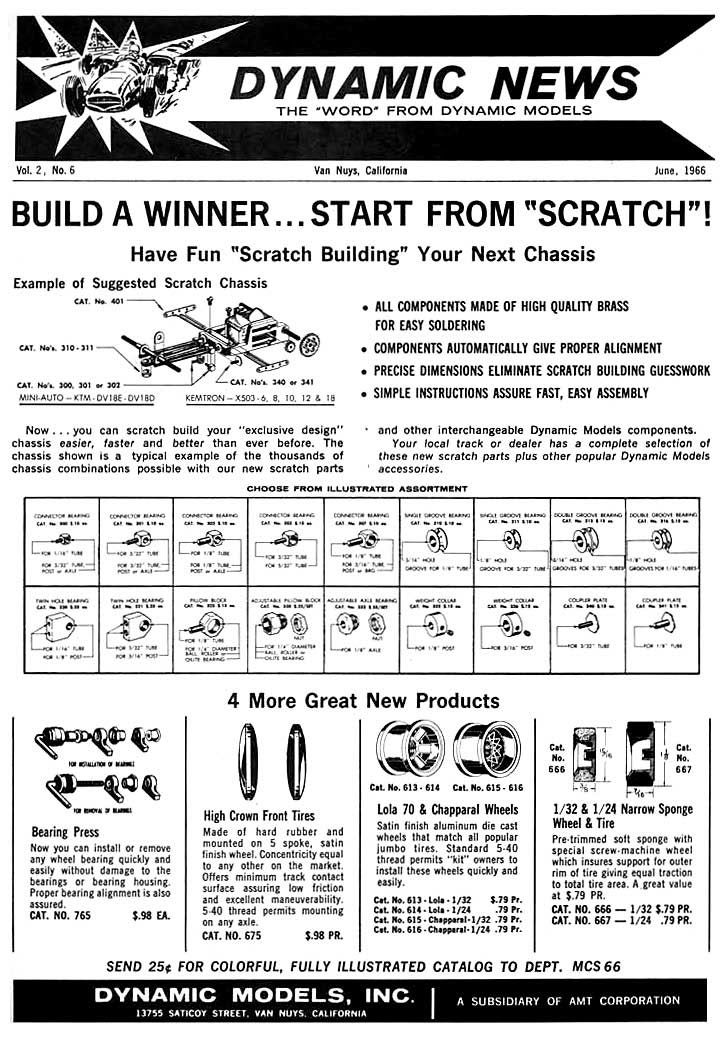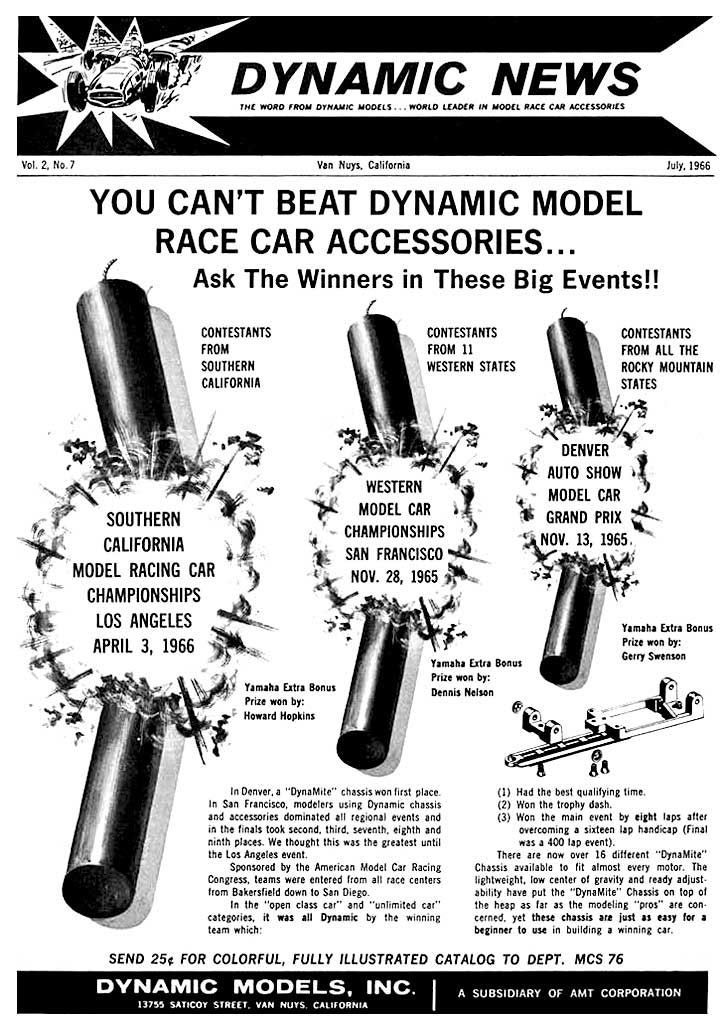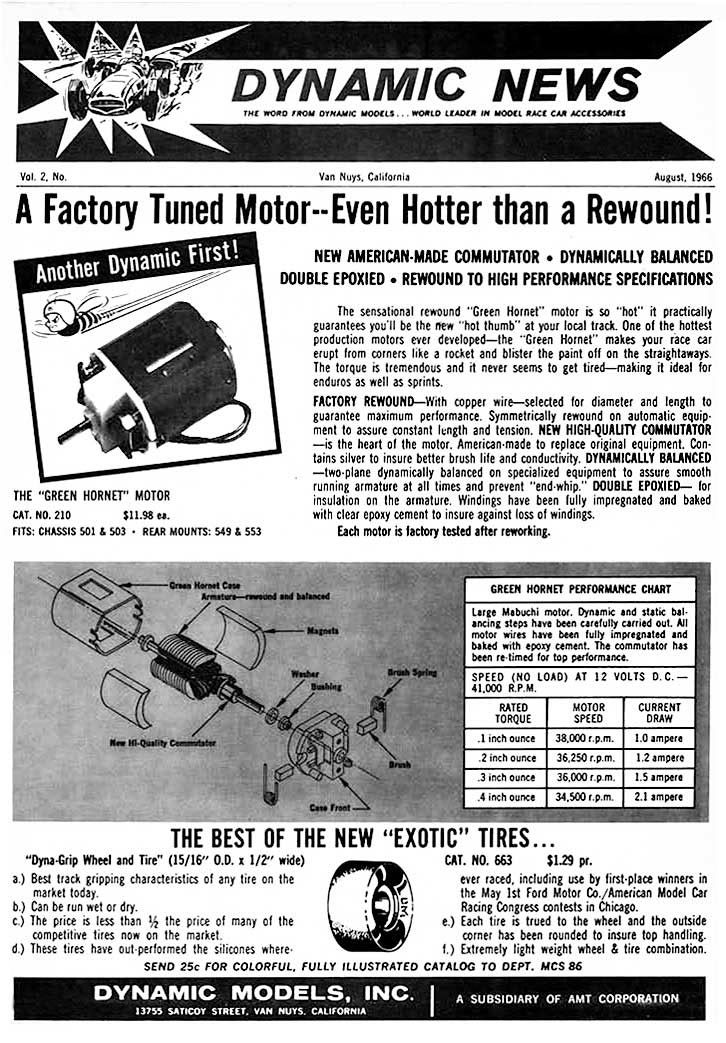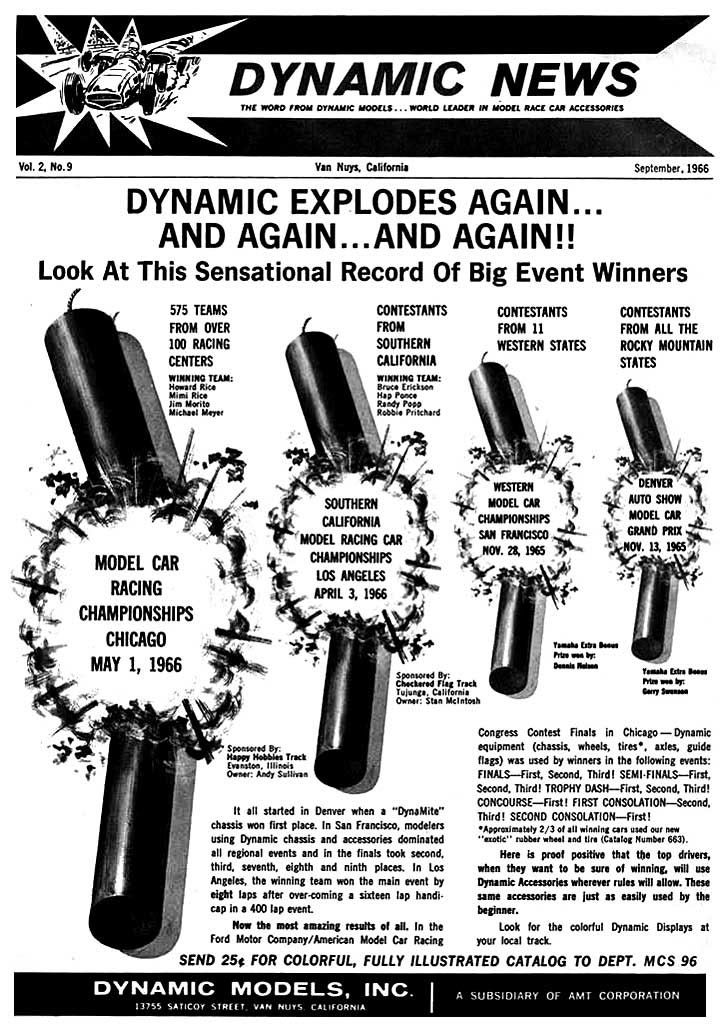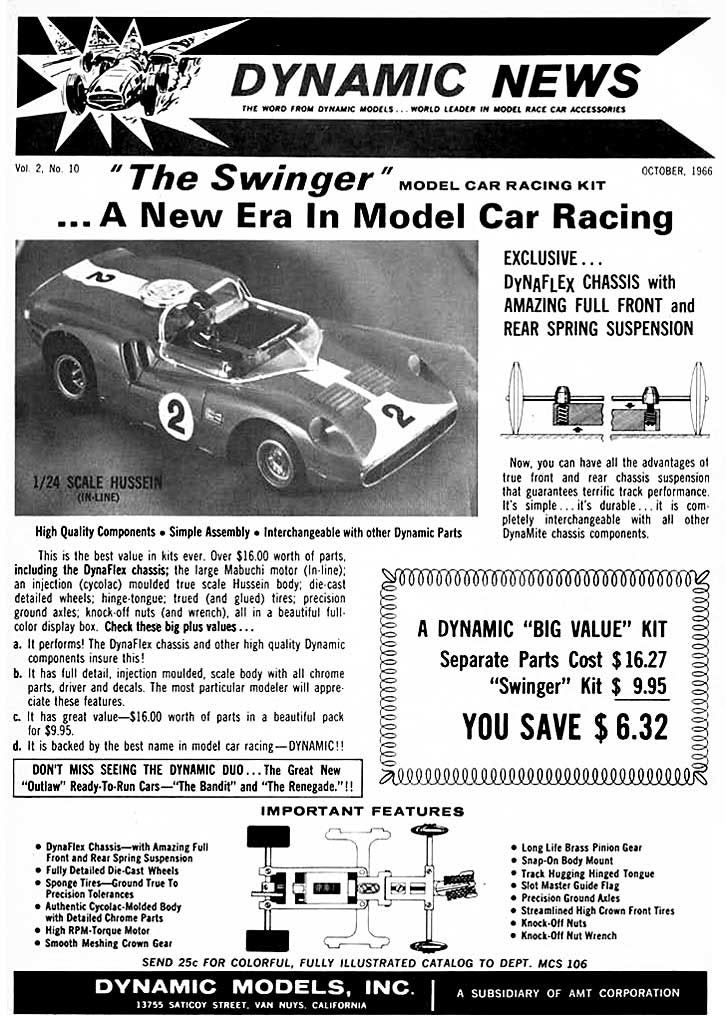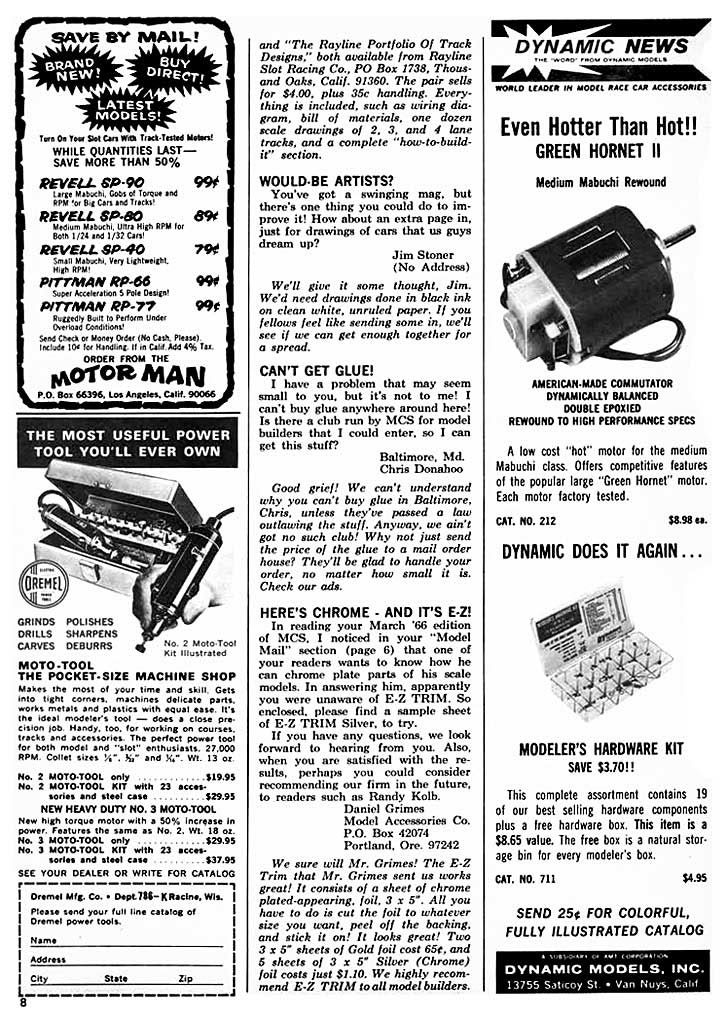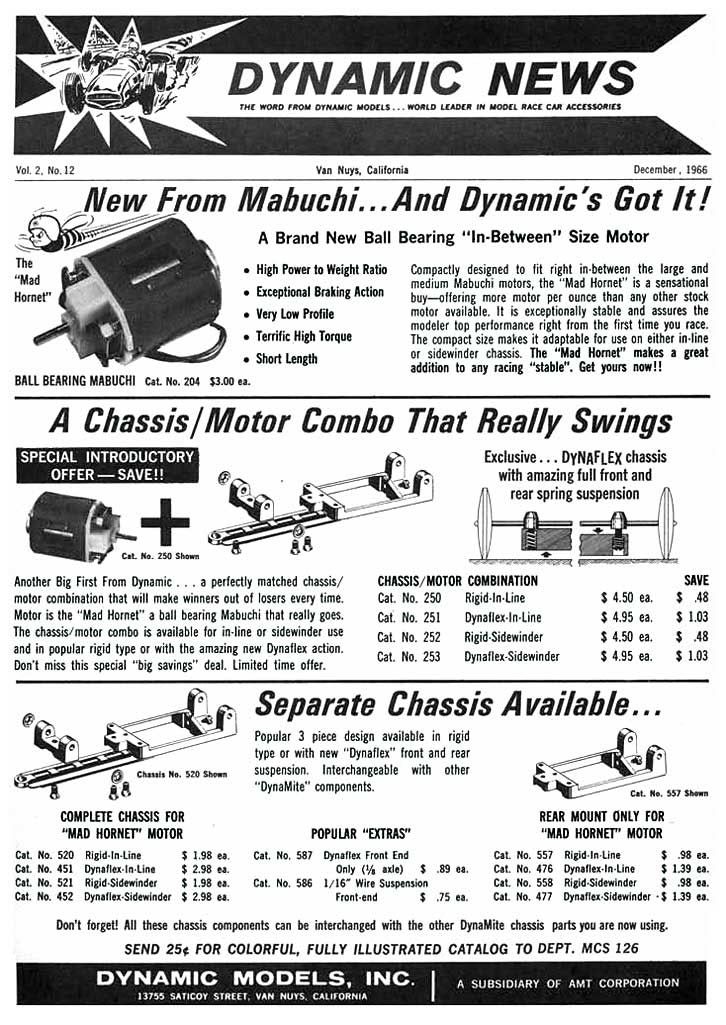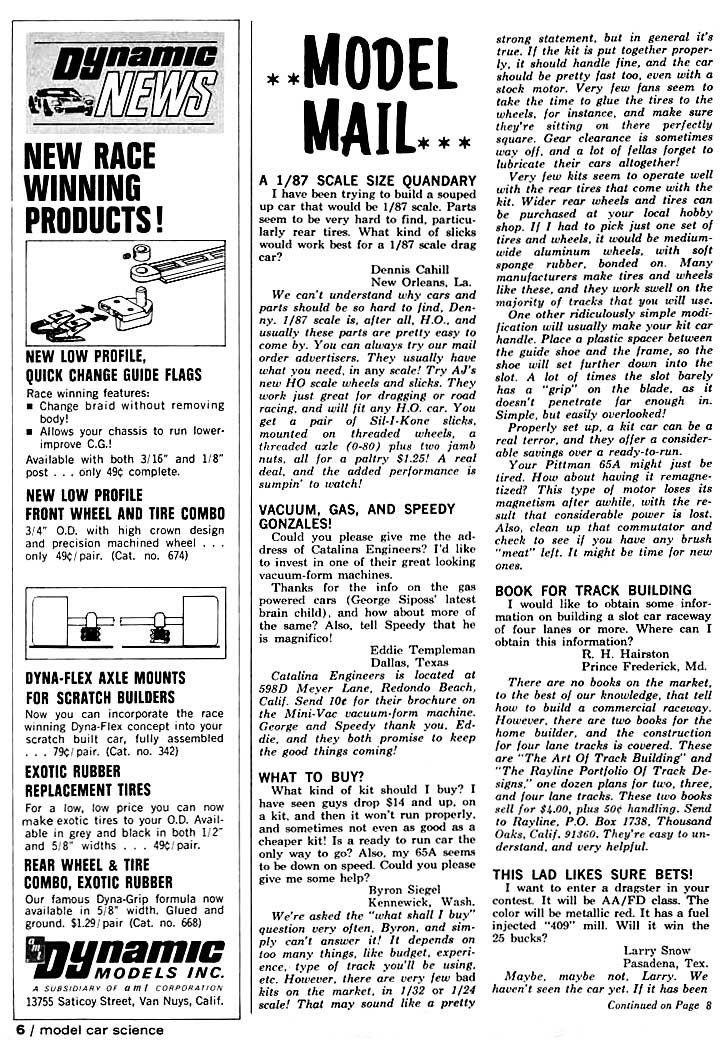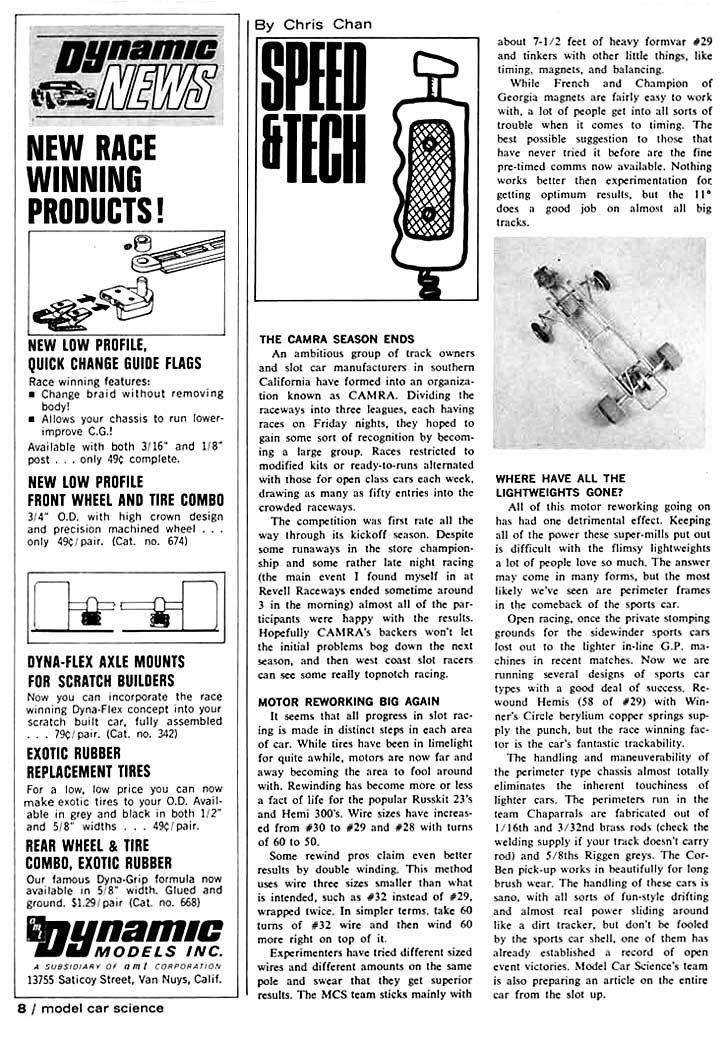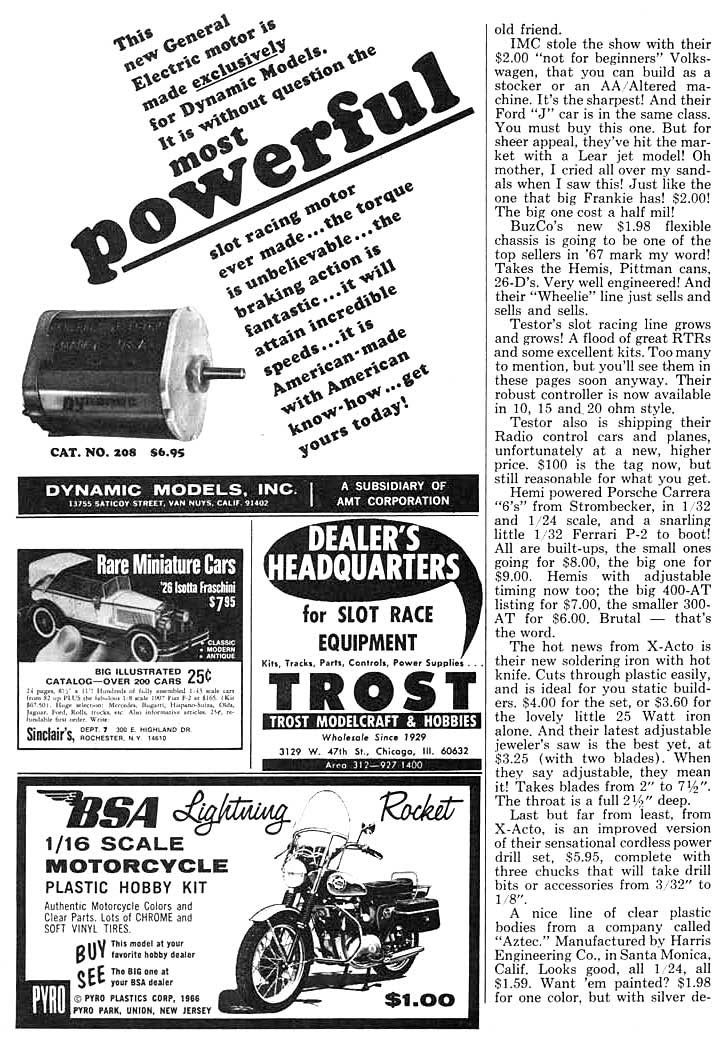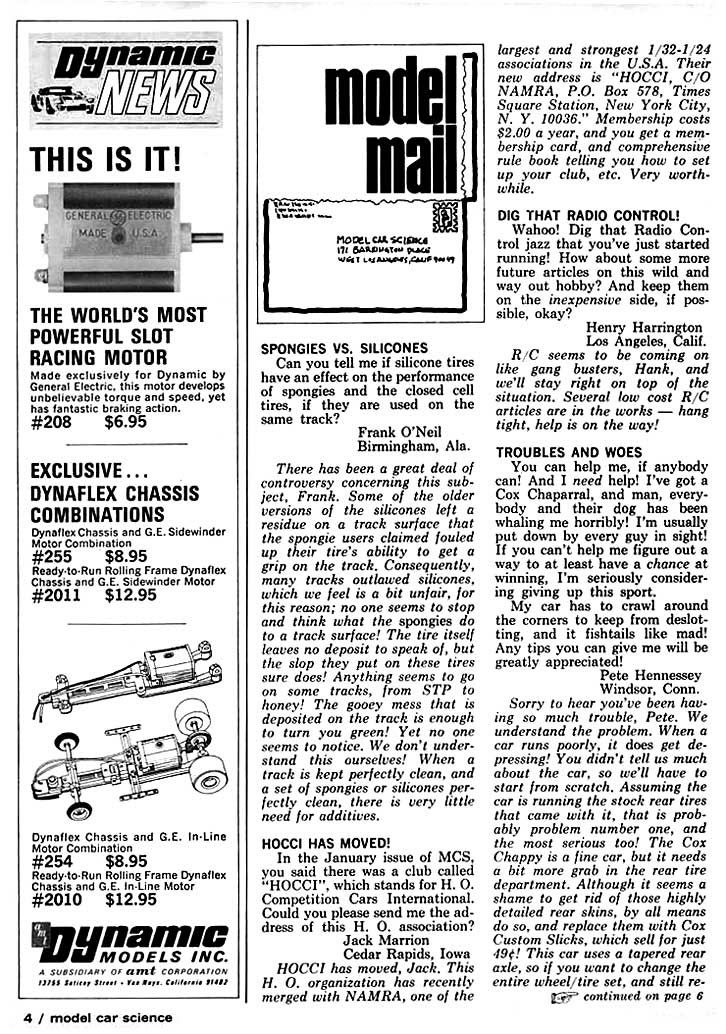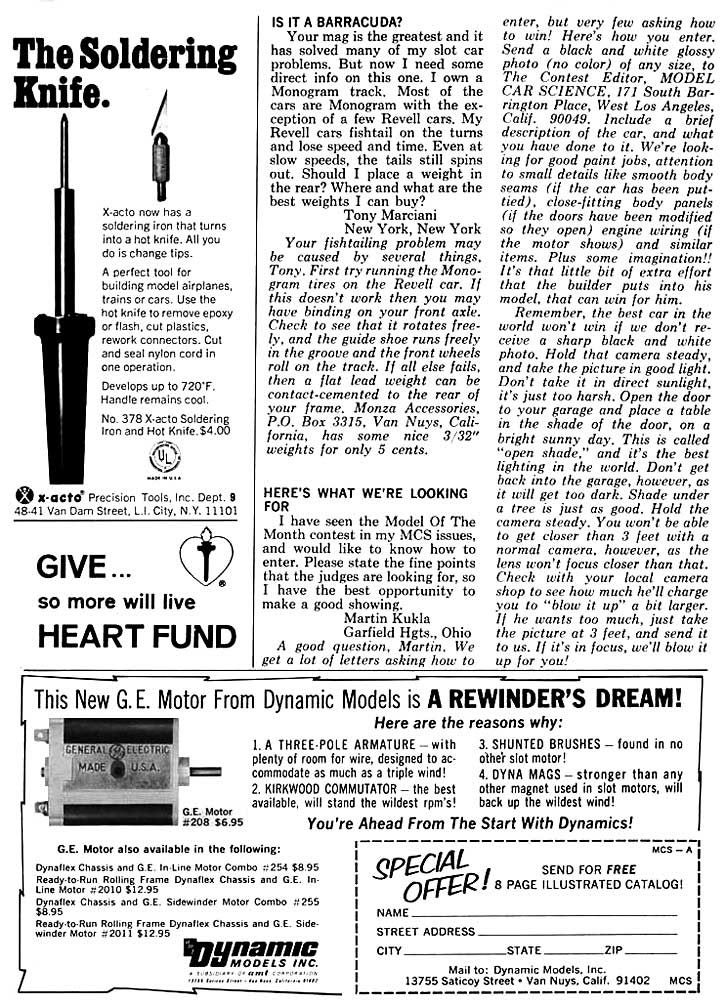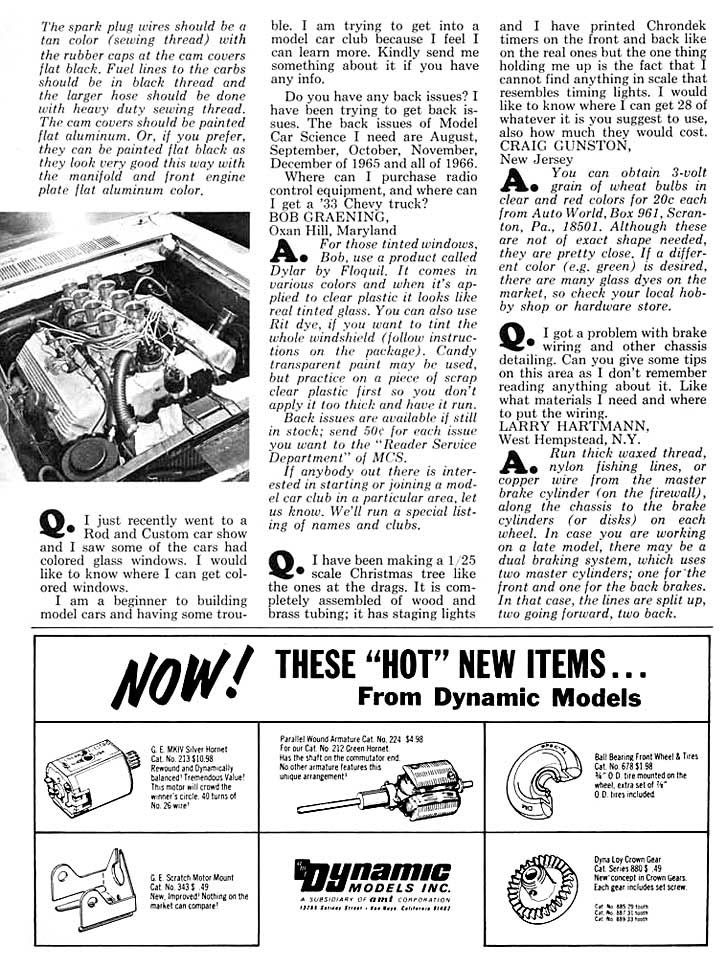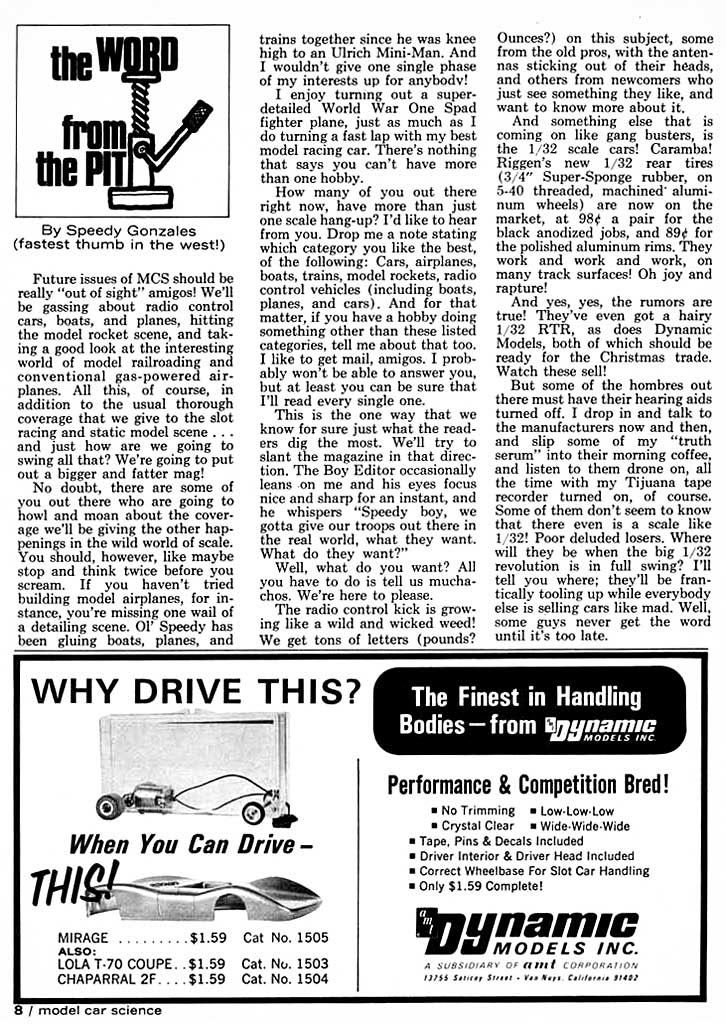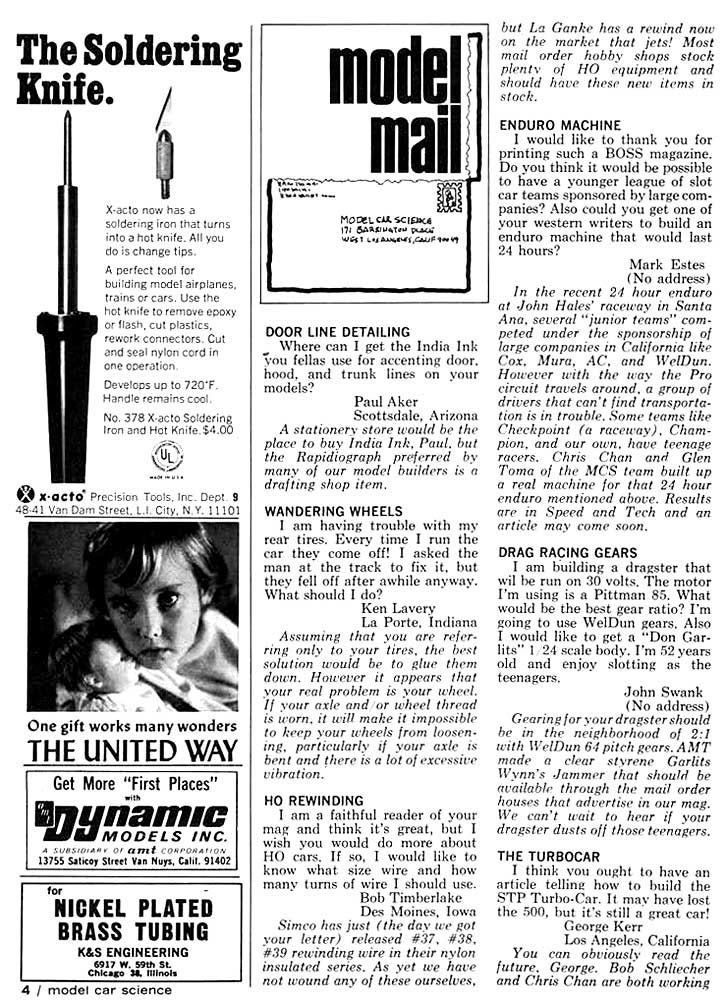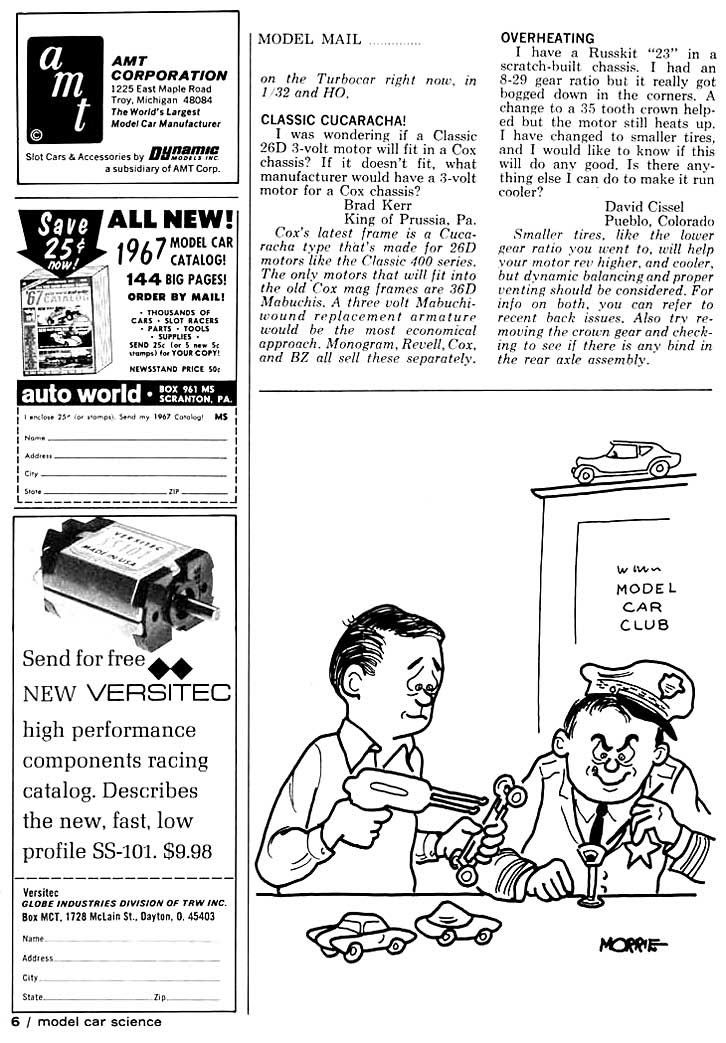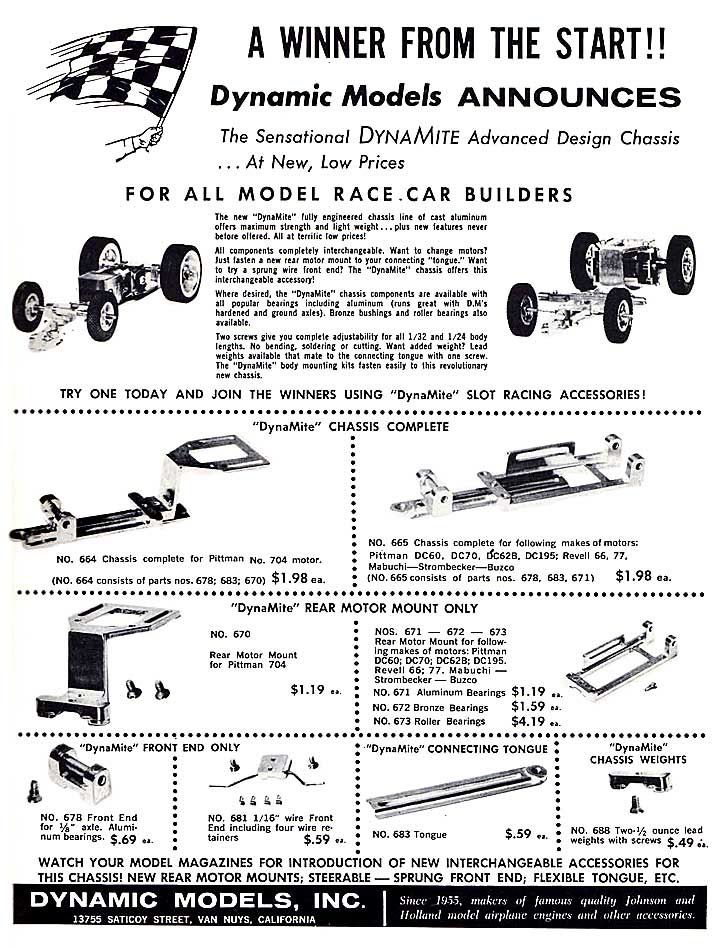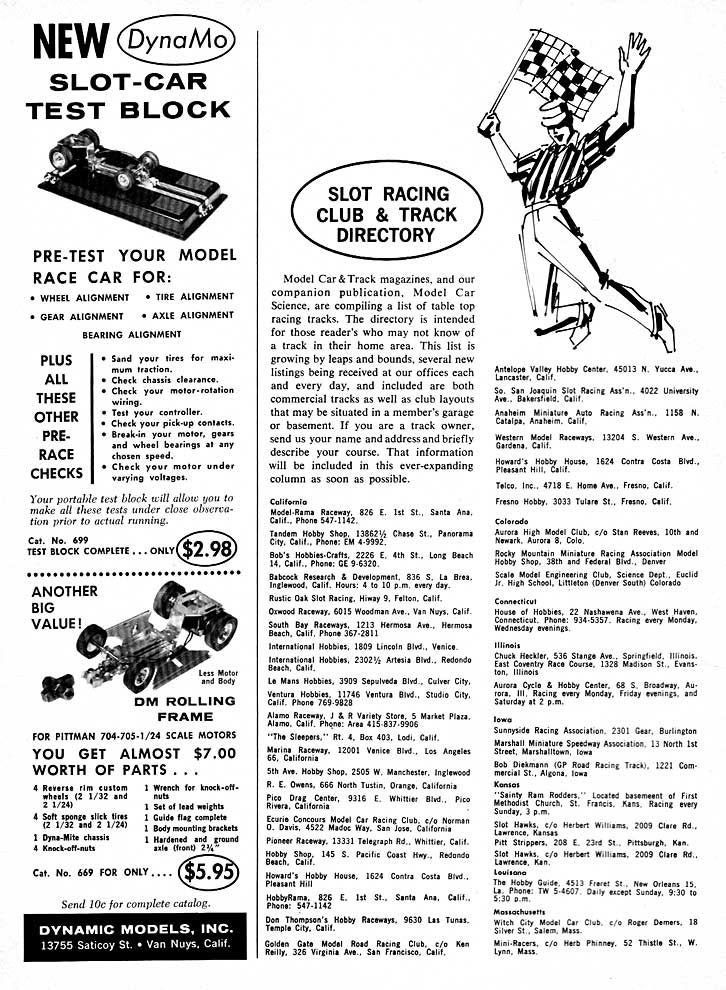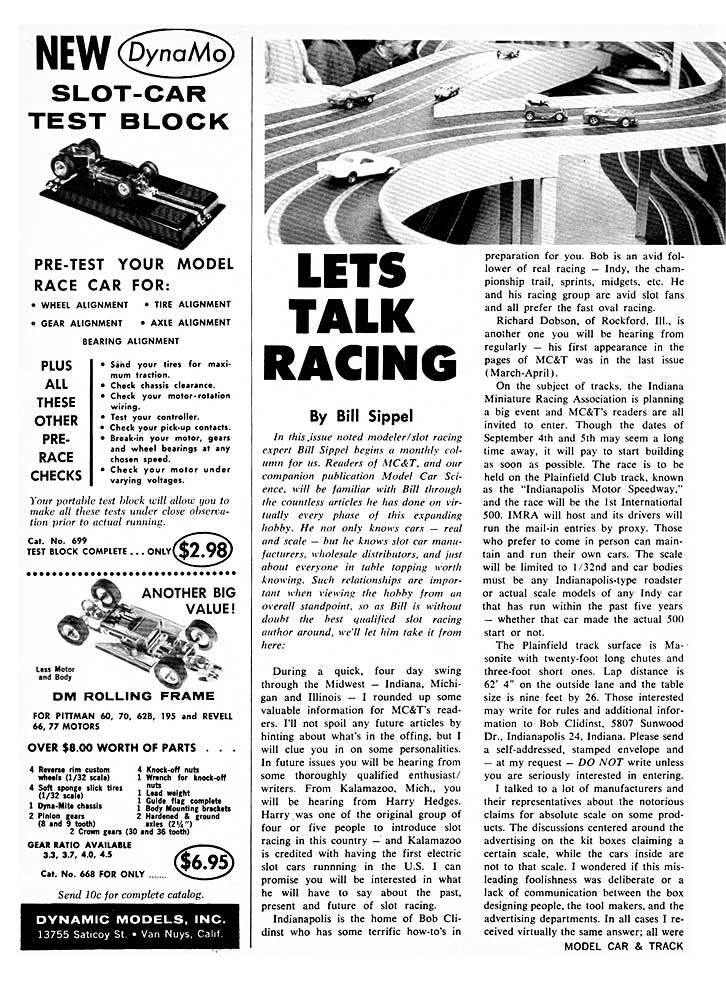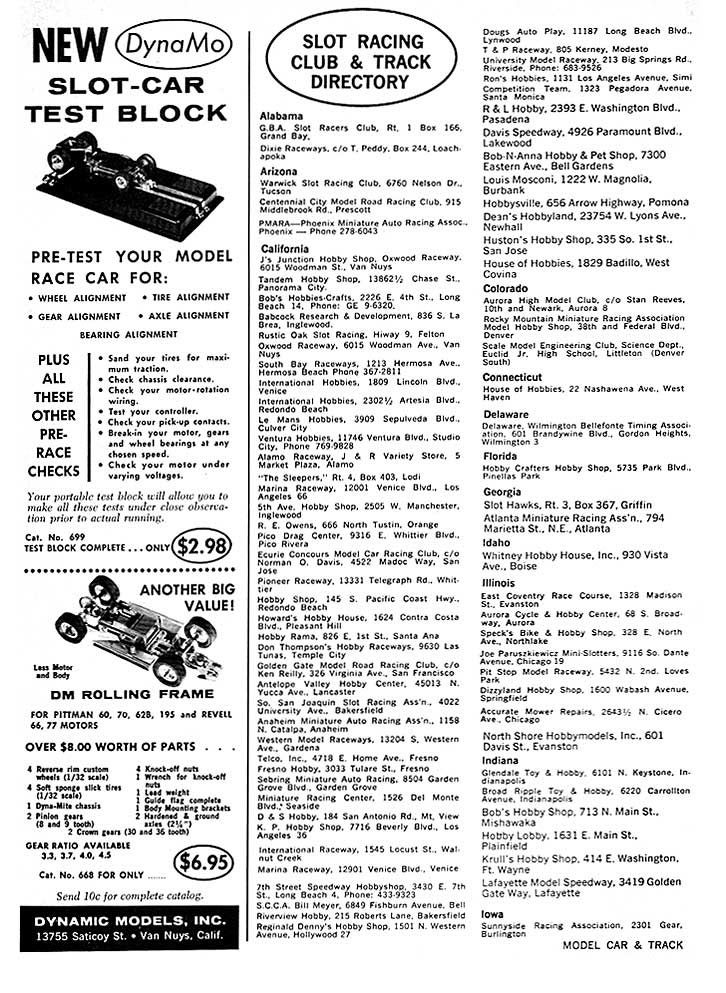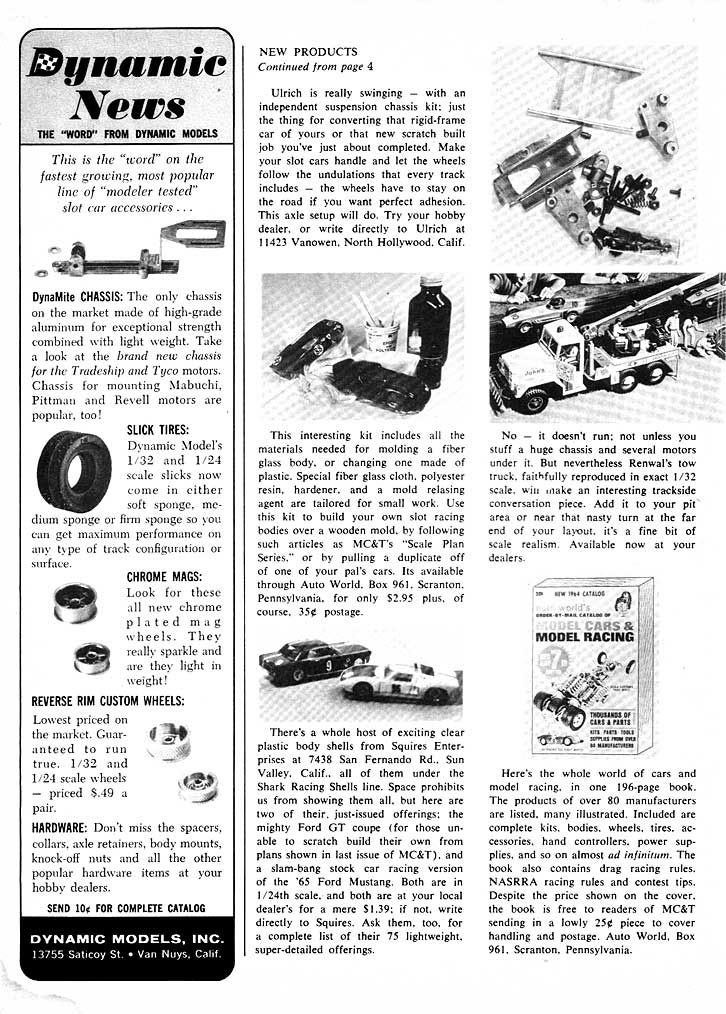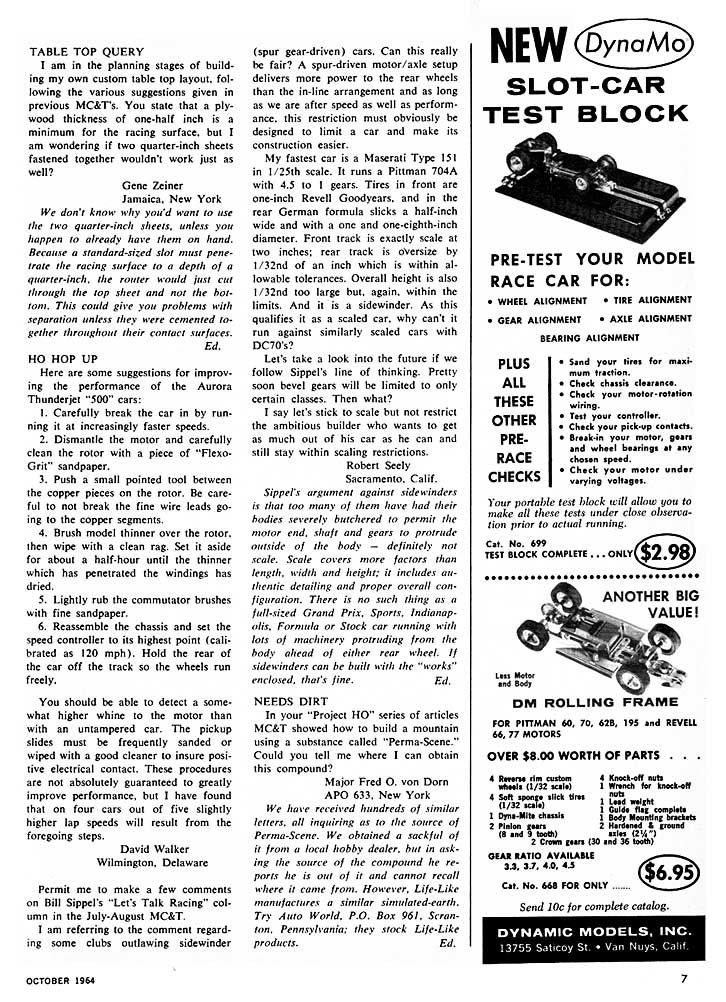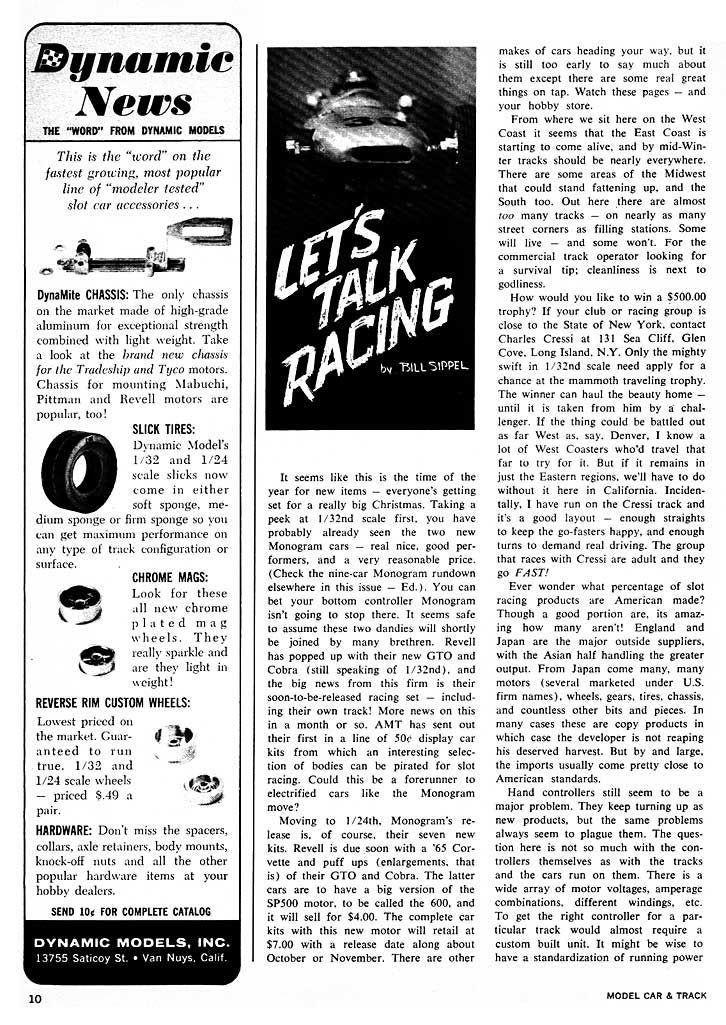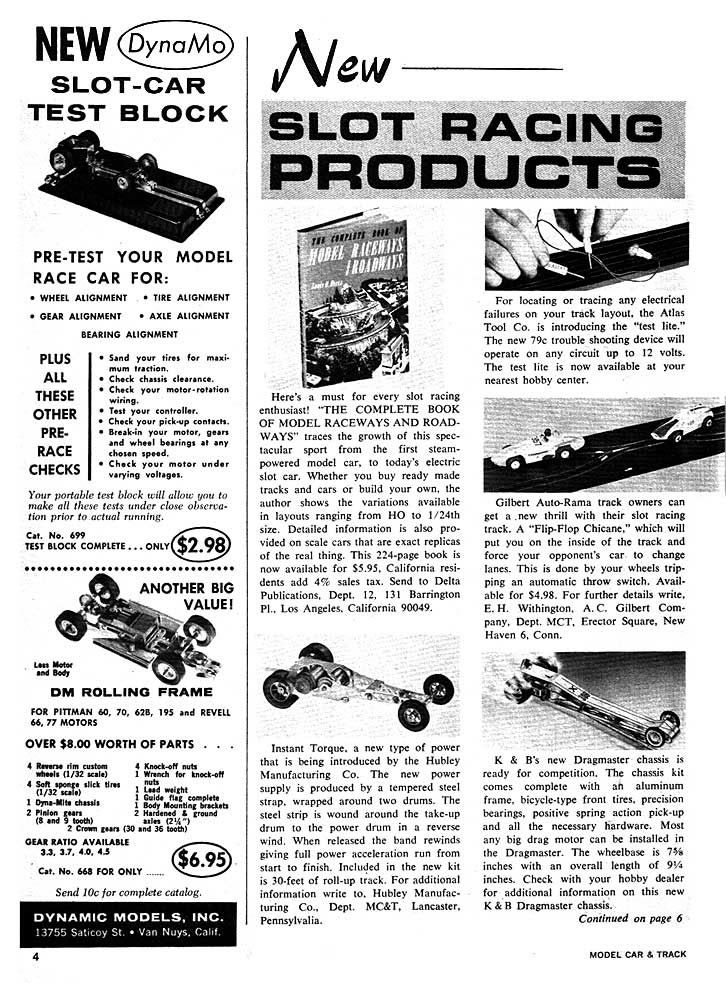OK, I found some of its remains...
DYNAMIC  Beginning with
Beginning with their association with AMT, of which Dynamic had become a subsidiary, motors were purchased in common from Mabuchi in a distinctive metallic purple color.
The standard FT36D motor was dubbed the "Hornet" and was identical to that used in the 1966 1/24 scale AMT "Series 2" kits and RTR's fitted with the brass inline chassis. The Dynamic "Renegade" RTR model used this motor, fitted with a narrower pinion and shorter output shaft.
Dynamic marketed in early 1966 a rewound, epoxied and dynamically balanced FT36 motor, basically a Russkit "33" motor purchased directly from Jim Russell. This motor, (cat. # 210) and its large brass bearing housing were painted a light metallic green right over the gold color. The armature stack was machined. The end bell was the weak Mabuchi early unit with brushes directly in contact with the Delrin material, so reliability was suspect at best if used in anger. There was no "Dynamic Models" sticker on this motor, called the "Tuned Hornet" on its packaging, "Green Hornet" on their advertising...
After the motor became somewhat obsolete, Dynamic sold the remaining motors in bulk to a distributor in Los Angeles who sold them in a clear plastic bag and a tog, calling them "Green Hornet". It is likely that the labor was subcontracted to the Mura motor company in San Leandro.


 It was rated at 34500 rpm with a 0.4 inch ounce torque applied.
It was rated at 34500 rpm with a 0.4 inch ounce torque applied. Dynamic used the same Mabuchi FT16D motor as used in the 1966 AMT 1/32 scale kits (fitted with zinc plated steel chassis) to equip their original "Bandit" RTR model. This was called the "Mad Hornet 16D"


This FT36D motor with upgraded endbell and brush heat sinks, was rewound and balanced. The endbell is affixed with two pin tabs on the now metallic red can. A Dynamic water-slide decal has been applied. Given in 1972 to the author by Hiram Johnson, it is not certain that this motor was actually produced. It was likely built for Dynamic by Mura.
The next production motor was this "Mad Hornet 16D" painted in a light metallic green right over the purple color, the rewound stock arm coated with clear varnish over the stock drill-balanced gray stack. This motor was used on the original version of the "Super Bandit" (black body, Dynaflex chassis) and is called the "Green Hornet II". The gold Dynamic sticker was applied on the motor. Depending on when they were produced, and as the fastening ears stamped on the can broke when the motors were opened or shut after the rewound arm was fitted, some had two self tapping assembly screws. Later, two pin tabs were used instead of the rather large screws. From left to right: original motor with intact retaining tabs, with two self-tapping screws and with pin tabs.



 Over a period of two years, t
Over a period of two years, this motor kept evolving and its armature stack was eventually machined.In 1968, Dynamic re-issued the Super Bandit RTR with a rewound, epoxied and balanced version of the new Mabuchi FT16DBB with a ball bearing located in a new aluminum housing in the can. This motor is very scarce and apparently was not sold separately. The endbell featured brass spring posts sleeves and pin tabs. This version, fitted with the gold sticker, was apparently sold in the very last Super Bandit models and is especially rare today.
By late 1966, the new "mid-size" Mabuchi FT26 became available and Dynamic got theirs, painted in the same metallic purple color as the "Hornet" line. It was sold separately and also used in the Ferrari 330P3 kit produced by Dynamic. Called the "Mad Hornet 26D", it was fitted with a self-adhesive gold and black sticker with the words "Dynamic Models". It used the standard Mabuchi armature with blue wire.
In early 1967, the same standard FT26 motors were no longer being painted, but were nickel plated like almost all other FT26 motors sold by Mabuchi to various marketers. They were also fitted with the gold and black sticker and appear to have only been used in the Ferrari 330P3 kits.
 Dynamic never issued a car equipped with this motor, but this was one of the most popular power plants for the short time it was available. The stock armature was de-wound by 10 turns off each pole, then epoxied and dynamically balanced, but the stack was not machined.
Dynamic never issued a car equipped with this motor, but this was one of the most popular power plants for the short time it was available. The stock armature was de-wound by 10 turns off each pole, then epoxied and dynamically balanced, but the stack was not machined. The can and bearing were painted a light metallic green right over the original Japanese purple paint of the Mad Hornet. Named "Green Hornet II", some have retained their original fastening ears, some have self-tapping screws to hold the can onto the endbell after the ears broke, later models have pin tabs.
This motor was very fast but was prone to the usual melting endbell plastic resulting in the usual brush derangement and brutal explosion, followed by the most acrid smoke. Very few survived and finding an intact sample is quite difficult.
A later version was rewound (vs de-wound) by Mura, with a machined armature stack and retaining pin tabs. In 1967, Dynamic coaxed General Electric into adapting an industrial motor for slot car racing. The result: too much torque at too low of RPM, needing impossible gearing. This was the "Silver Hornet". A version of the "Silver Hornet" was later produced with a more manageable torque curve, but it was too late.

In 1969, Dynamic had a professional racing team composed of Jack Garcia and Bruce Erickson. This Mura motor was briefly marketed by Dynamic in four different winds and is very hard to find today, let alone a boxed example.
